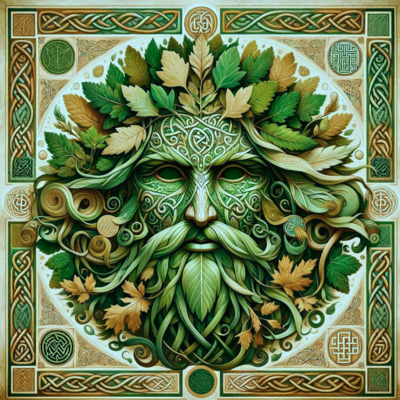All About Beltane

Beltane is a traditional Celtic festival celebrated on May 1st, marking the midpoint between the spring equinox and the summer solstice. It is a time of joyous celebration, symbolizing the height of spring and the beginning of summer. The name "Beltane" is believed to originate from the Celtic god Belenus, associated with the sun and fertility.
During Beltane, communities would come together to honor the earth's fertility and encourage the growth of crops and livestock. Rituals often involved lighting bonfires, dancing around Maypoles adorned with colorful ribbons, and performing ceremonies to bless fields and homes. The fires were considered sacred and were believed to possess protective and purifying qualities.
Beltane is also associated with themes of love and courtship, as it was believed that the fertility of the land mirrored the fertility of human relationships. Handfasting ceremonies, symbolic of marriage, were sometimes performed during Beltane, with couples binding their hands together with ribbons or cords as a pledge of commitment.
Today, Beltane continues to be celebrated by modern Pagans and Wiccans as a time to honor the sacredness of nature, embrace creativity, and cultivate joy and vitality. It is a time for rituals, feasting, and connecting with the rhythms of the earth, welcoming the warmth and abundance of the summer months ahead.
Overall, Beltane is a time of celebration, fertility, and connection with the natural world. It invites people to embrace the vitality of spring and welcome the warmth and abundance of summer with open hearts and joyful spirits.
During Beltane celebrations, communities often gather in outdoor spaces such as parks, forests, or fields to connect with nature and each other. Participants may dress in colorful attire, adorned with flowers and greenery, symbolizing the vitality and abundance of the season. Rituals and ceremonies may vary depending on individual beliefs and traditions but often include elements such as:
- Bonfires: Lighting large bonfires is a central aspect of Beltane celebrations. These fires symbolize the sun's strength and vitality, as well as purification and protection. People may leap over the flames as a form of purification or to bring luck and fertility.
- Maypole Dancing: Maypole dancing is a joyful and intricate dance around a tall pole adorned with ribbons and flowers. Participants weave the ribbons around the pole as they dance, symbolizing the intertwining of masculine and feminine energies, as well as the union of earth and sky.
- Feasting: Sharing food and drink is an integral part of Beltane festivities. Communities come together to enjoy seasonal foods such as fruits, vegetables, bread, and dairy products. Feasting fosters a sense of community and abundance, celebrating the earth's bounty.
- Rituals: Various rituals may be performed during Beltane, focusing on themes of fertility, growth, and renewal. These rituals may include blessing fields and gardens, honoring deities associated with fertility and love, and setting intentions for the coming season.
- May Queen and Green Man: In some traditions, a May Queen and Green Man are chosen to represent the feminine and masculine aspects of nature. The May Queen symbolizes the earth's fertility and beauty, while the Green Man represents the spirit of the forest and the wild.
